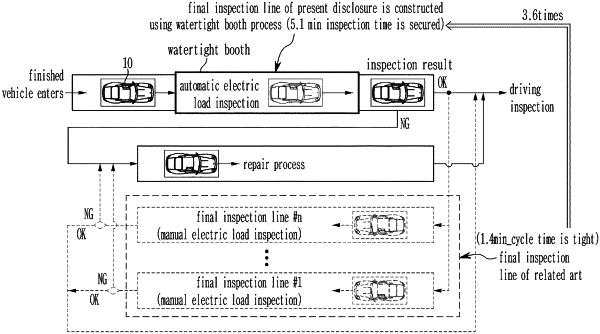| CPC B62D 65/005 (2013.01) [B60J 1/17 (2013.01); B60Q 1/44 (2013.01); B60R 16/0234 (2013.01); B60R 16/033 (2013.01); B60R 25/20 (2013.01); G07C 5/008 (2013.01); G07C 5/0808 (2013.01)] | 17 Claims |

|
13. An automated vehicle inspection method utilizing a diagnostic terminal mounted in a vehicle completely assembled in a process line, the method comprising the following steps:
a) receiving electric component inspection items matched to a vehicle ID from an inspector when a first diagnostic communication network is connected through a first antenna provided on an entrance side of a watertight booth during transportation of the vehicle;
b) recognizing a position of the vehicle and initiating automated inspection according to an electric load inspection program when a watertight entry position is recognized;
c) sequentially operating individual electric components based on the inspection items while the vehicle is passing through the watertight booth, and inspecting corresponding individual operating currents to determine whether the individual electric components normally operate; and
d) transmitting the vehicle ID and determined inspection results to the inspector when a second diagnostic communication network is connected through a second antenna provided on an exit side of the watertight booth.
|